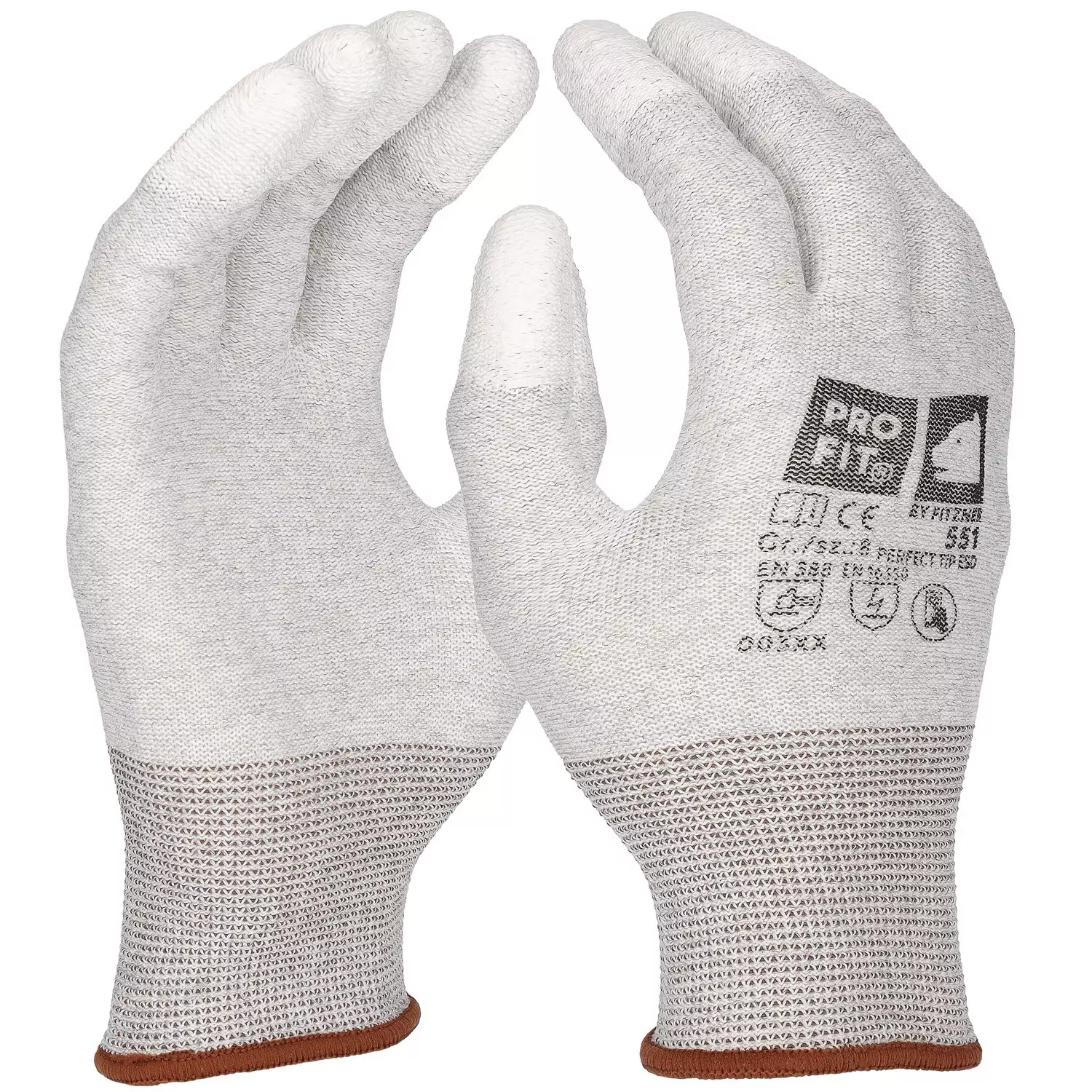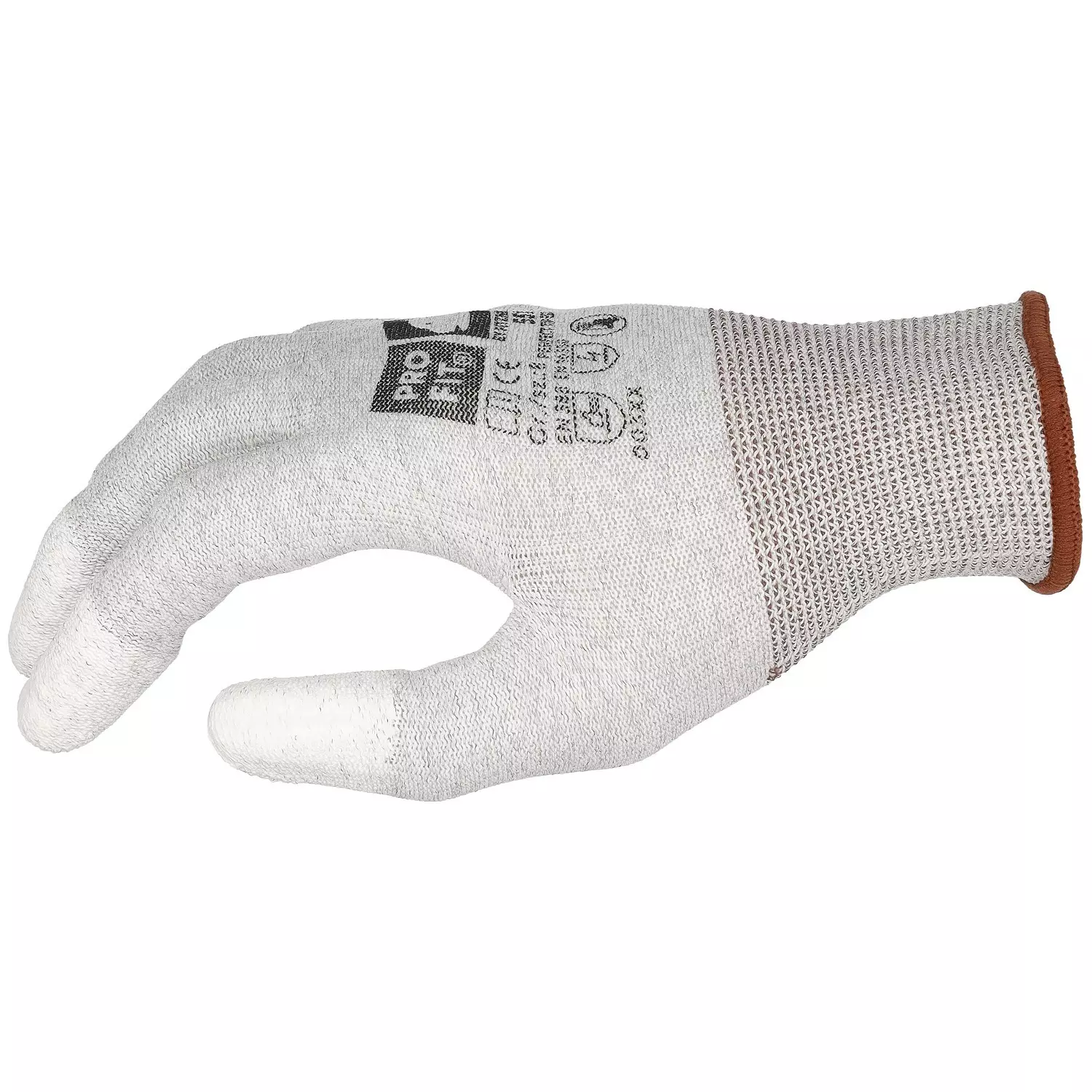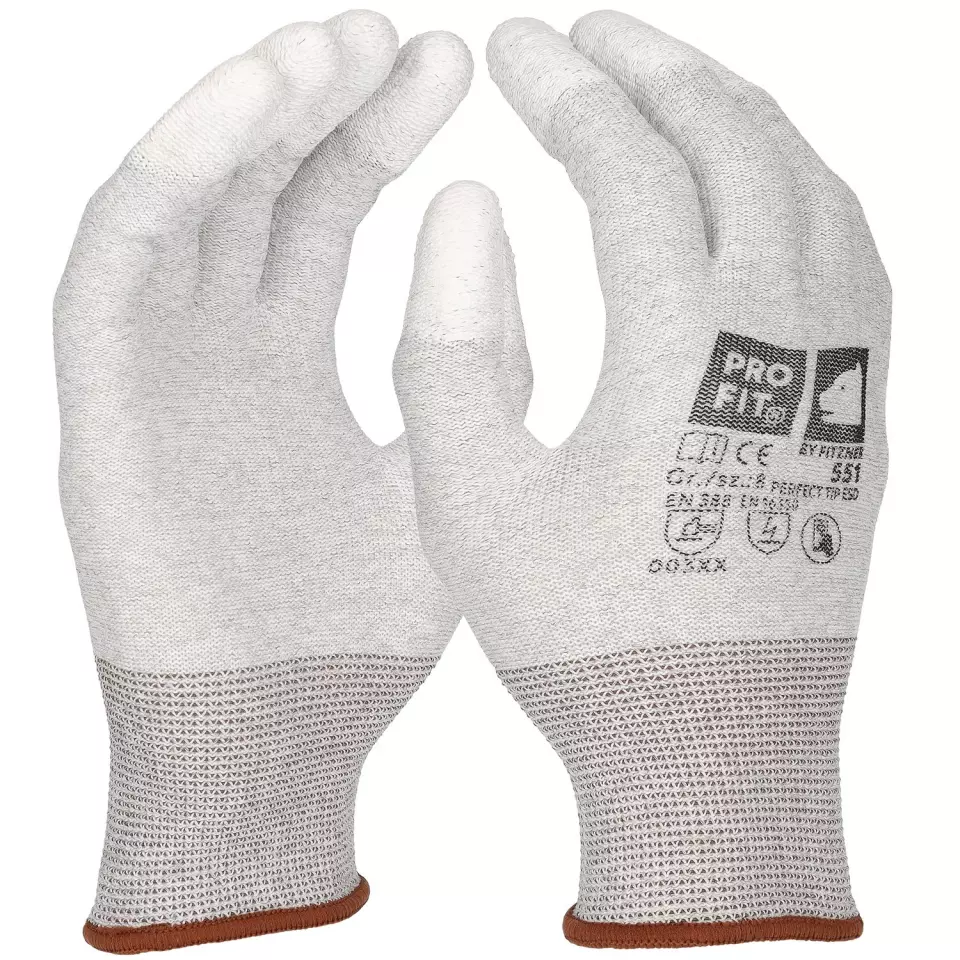

Features You'll Love

EN 388 · Abrasion Resistance Level 0
Offers no rated protection against rubbing or surface wear.
PRO FIT
Perfect tip esd ESD Glove, 12 pairs
PRO FIT
Perfect tip esd ESD Glove, 12 pairs
5 / 5
12,43 €
Price per 12 pairs
1,04 € / pair
Choose size
Out of stock
Shipping fee is 4,74 € for orders under 150,00 €
Features You'll Love

EN 388 · Abrasion Resistance Level 0
Offers no rated protection against rubbing or surface wear.
Product description
This specially developed ESD protective glove provides optimal protection against electrostatic discharge in microelectronics. The PU coating on the fingertips ensures precise tactile sensitivity while maintaining a secure grip. The seamless circular knit construction with polyester/carbon fiber liner provides maximum wearing comfort and optimal breathability.
Product Features:
- PU coating on fingertips
- Seamless circular knit construction
- Polyester/carbon fiber liner
- Elastic knitted cuff
- Optimized ESD protective properties
Technical Details:
- Vertical resistance: 116kΩ
- Test conditions: 23°C / 25% RH
- Tested areas: Fingertips, palm, back, cuff
- Test electrode according to EN 1149-2
Standards:
- EN 16350:2014 (ESD protective properties)
- EN ISO 21420:2020
- EN 388:2016 A1:2018 (Protection levels: 0.1.3.X.X)
Applications:
- Microelectronics manufacturing
- Electronic component assembly
- Precision work with ESD-sensitive components